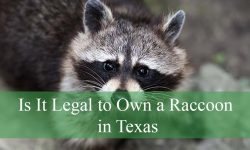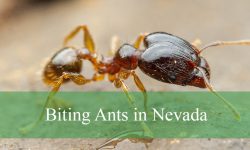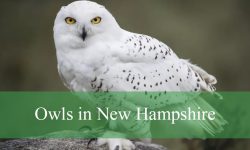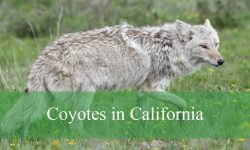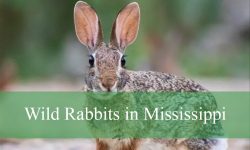Idaho is home to a variety of quail species, each offering a unique glimpse into the state’s diverse landscapes. From the brushy valleys in the southwest to the high mountain forests, quail have adapted to thrive in a range of habitats. Observing them can be a rewarding experience, whether you are a birdwatcher, photographer, or hunter.
The call of a quail, the subtle flick of its plume, and the rapid movement of a covey across the ground are some of the small joys that nature lovers encounter throughout Idaho. While some species are common and widely distributed, others are rare or restricted to specific regions, making every sighting a special event.
Understanding quail species in Idaho helps not only with identification but also with appreciating their behavior, feeding habits, and the unique environments they inhabit. In this guide, we’ll explore the four quail species found in Idaho, their identification, size, behavior, diet, habitats, and fun facts.
Different Types of Quail Found in Idaho
California Quail (Callipepla californica)
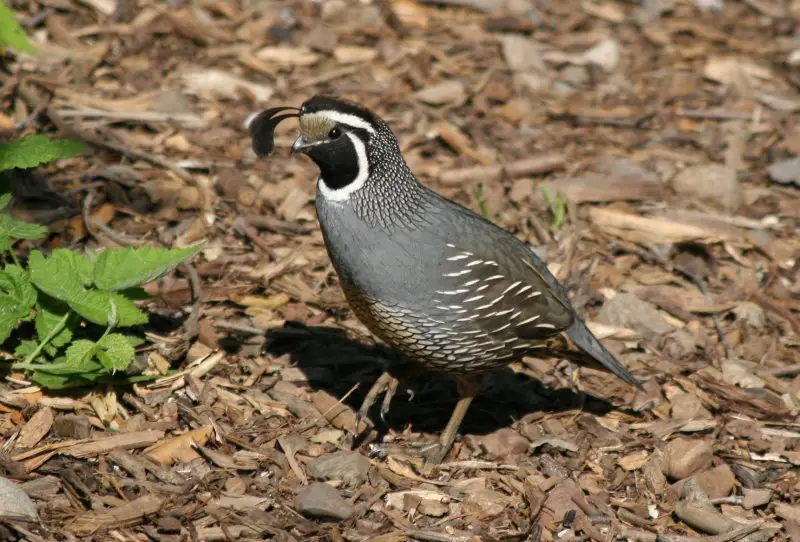
The California Quail is one of the most recognizable quail species in Idaho, especially common in the southwestern and central regions. Adults have a distinctive forward-drooping black plume on the head, with males showing a bold black face bordered by white and a bluish-gray chest, while females are more subdued with brown-gray tones. Their short, rounded wings and plump bodies give them a compact, ground-dwelling appearance.
Typically, California Quail measure around 9–11 inches in length, with a wingspan of 12–14 inches, and weigh approximately 5–6 ounces. They often move in small coveys, particularly outside the breeding season, and are highly social birds. When startled, they tend to burst into short, rapid flights with a distinctive whirring sound before quickly dropping into cover.
Their diet primarily consists of seeds, leaves, and insects, depending on the season. They forage on the ground, scratching leaf litter and soil to uncover food, which makes them important for controlling insect populations and spreading plant seeds. Water is usually sought at dawn and dusk, as these birds avoid venturing far from cover.
A fun fact about California Quail in Idaho is their remarkable adaptability—they thrive in brushy valleys, open woodlands, and farmland edges. Their melodious “chi-ca-go” call is often heard at dawn, serving as a social signal for coveys to regroup. They are also one of the earliest birds in the state to breed, sometimes beginning nesting as early as March.
Gambel’s Quail (Callipepla gambelii)
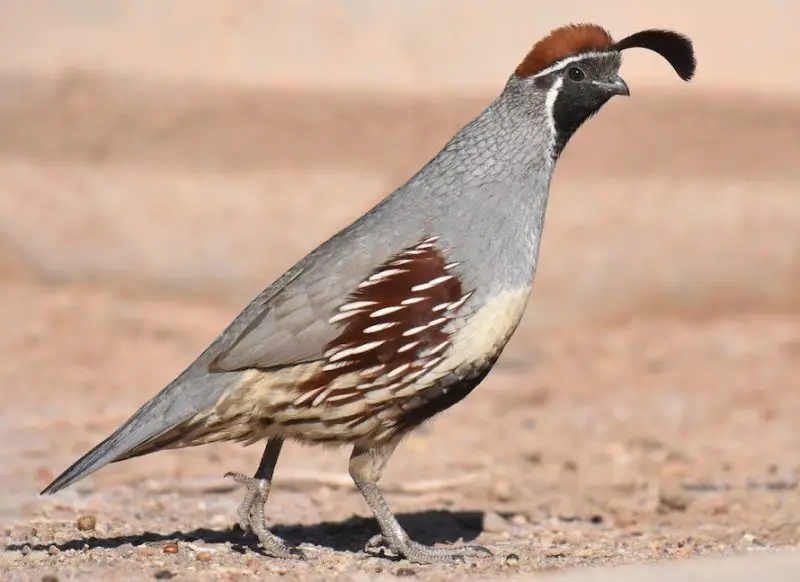
Gambel’s Quail are rare in Idaho and mostly confined to the southern desert-like areas near the Snake River Plain. They have a striking appearance, with males sporting a prominent black face mask and a long, curved topknot plume, reddish-brown sides, and gray-blue underparts. Females and juveniles are duller, with pale gray-brown plumage and a smaller plume. Their elegant plume and distinctive coloration make them easier to identify compared to other quail species.
Adults measure 9–11 inches long, with wingspans around 12–13 inches, similar in size to California Quail, but their longer topknot plume distinguishes them at a glance. Gambel’s Quail are highly social and often form coveys of 10–15 birds. They are more secretive than California Quail, preferring dense shrubs for cover and quick sprints into brush when threatened.
Gambel’s Quail mainly eat seeds, leaves, and occasional insects. They are ground foragers and often scratch the soil in search of food. Unlike their California counterparts, they are well adapted to arid conditions, rarely requiring direct water sources, as they obtain moisture from succulent plants and dew.
A fun fact is that Gambel’s Quail exhibit a “broken-wing” distraction display to protect their young from predators. When threatened, an adult may feign injury, luring predators away from nests. Their limited range in Idaho makes sightings rare, but southern enthusiasts report seeing them near dry riverbeds and shrublands during early morning or late afternoon.
Mountain Quail (Oreortyx pictus)
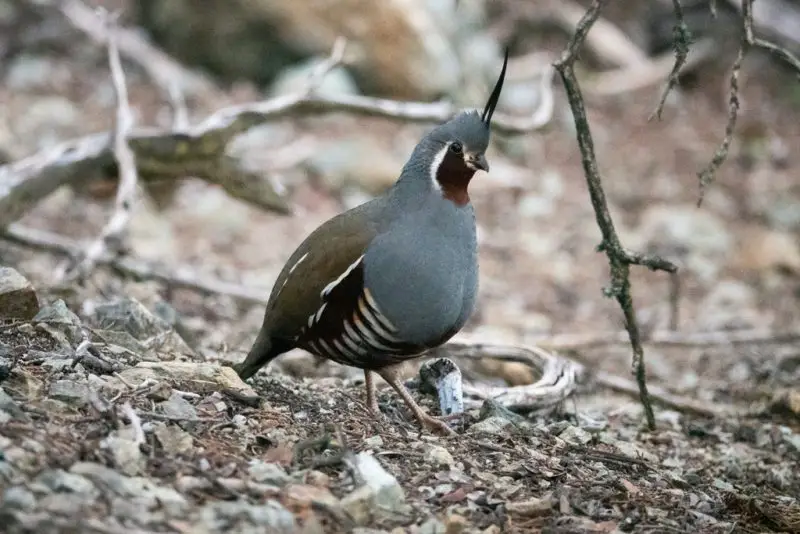
Mountain Quail are less common in Idaho and primarily inhabit higher elevation forests and mountainous regions in the central and northern parts of the state. They are the largest quail species in North America, with males exhibiting a long, elegant head plume, gray-brown body, and rich chestnut flanks, while females have shorter plumes and muted brown-gray coloring. Their large size and graceful plumage make them highly distinctive among Idaho quail.
Adults range from 12–14 inches long, with a wingspan of 14–16 inches, and can weigh up to 10 ounces. They are strong runners and prefer to stay on steep slopes, using dense underbrush for cover. Coveys are smaller, usually 5–10 birds, and Mountain Quail tend to be quieter than other quail species, using subtle calls to communicate.
Their diet consists of seeds, berries, leaves, and insects, foraging mostly along forest floors and shrub patches. Mountain Quail are highly territorial during breeding season, often returning to the same nesting areas year after year. Their steep habitat helps protect them from predators and harsh weather.
A fun fact about Mountain Quail is their impressive ability to survive in cold, snowy conditions at high elevations. They are known for long, steep flights down mountain slopes when escaping predators, a behavior not typical for other quail species. Birdwatchers often need patience and elevation hikes to spot them in Idaho.
Northern Bobwhite (Colinus virginianus)
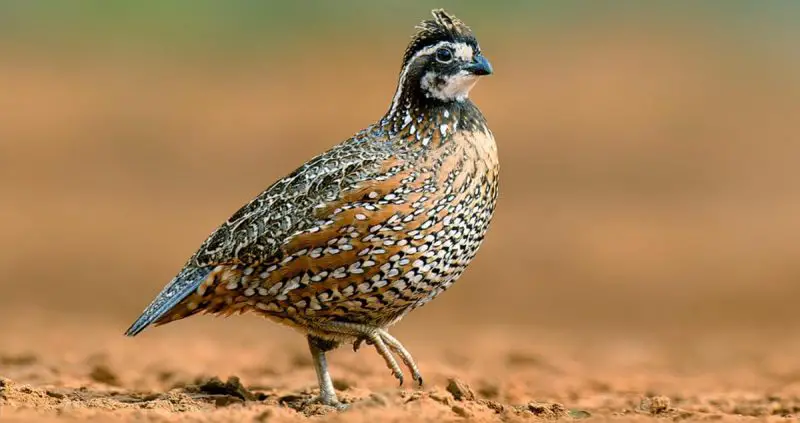
The Northern Bobwhite is very limited in Idaho, mostly found in southern regions near farmland and grasslands. Males are distinguished by their white throat and brow, contrasting sharply with the dark brown face and reddish-brown body, while females are duller with buff-colored throats. Their compact, rounded appearance and bobbing movements make them relatively easy to identify when seen.
Adults are smaller than Mountain Quail, around 9–10 inches long with a wingspan of 12 inches, and weigh about 5–6 ounces. Northern Bobwhites are ground-dwelling and prefer dense grass or brush for cover. They are usually seen in small coveys, actively moving while calling their distinctive “bob-white” whistle, which is often the first sign of their presence.
They feed primarily on seeds, grains, and insects, which they scratch from the soil. These quail also use open areas for foraging but always remain close to protective cover. Their adaptability to agricultural landscapes allows them to survive in limited pockets of southern Idaho.
A fun fact about Northern Bobwhites is their rapid population fluctuations. Harsh winters or habitat loss can drastically reduce numbers, making them elusive in Idaho. Their loud, melodic whistles, however, make them a rewarding find for birdwatchers and hunters alike.
Best Times and Places to Spot Quail in Idaho
The best time to observe quail in Idaho is during the early morning or late afternoon when birds are most active. California Quail are widespread and easiest to spot in southwestern valleys and farmland edges. Gambel’s Quail require visits to southern shrublands or desert-like areas. Mountain Quail are best found at higher elevations, often requiring hikes into forested slopes. Northern Bobwhite are limited to southern grasslands and farmland patches.
Spring and fall are ideal seasons, with cooler temperatures and peak feeding activity increasing sighting chances. Quail are social and vocal, so listening for their calls often leads to successful identification.
FAQs About Quail in Idaho
What types of quail are found in Idaho?
Idaho hosts four main quail species: California Quail, Gambel’s Quail, Mountain Quail, and Northern Bobwhite. California Quail are the most common, while Gambel’s Quail and Northern Bobwhite are rare. Mountain Quail are found primarily in higher elevations.
How can I identify California Quail?
California Quail males have a forward-drooping black plume, black face bordered with white, bluish-gray chest, and brown flanks. Females are brown-gray and less striking. They are plump, ground-dwelling birds often seen in coveys.
Where are Gambel’s Quail found in Idaho?
Gambel’s Quail are mostly limited to southern desert-like regions near the Snake River Plain. They prefer dense shrubs and brush for cover and are rare compared to other quail species in the state.
What is unique about Mountain Quail?
Mountain Quail are the largest quail species in North America and have long, elegant head plumes. They inhabit higher elevation forests and mountainous regions and are known for their ability to survive snowy, steep slopes.
Are Northern Bobwhite common in Idaho?
No, Northern Bobwhite are very limited in Idaho, primarily found in southern grasslands and farmland. Their population fluctuates due to harsh winters and habitat changes, making sightings uncommon.
When is the best time to see quail in Idaho?
Early mornings and late afternoons are ideal for spotting quail, as they are most active during these times. Spring and fall are also excellent seasons because birds are feeding actively and calling frequently.
What do Idaho quail eat?
Quail diets include seeds, grains, leaves, berries, and insects. They forage on the ground, scratching leaf litter or soil to uncover food. Some species, like Gambel’s Quail, get moisture from succulent plants and dew.
How do quail behave in Idaho?
Quail are social birds, often moving in coveys ranging from 5 to 15 individuals depending on the species. They use quick bursts of flight or running into dense cover to escape predators and communicate through distinctive calls.
Can I hear quail before seeing them?
Yes, quail are often easier to detect by sound. California Quail make a “chi-ca-go” call, while Northern Bobwhite have a distinct “bob-white” whistle. Listening for these calls increases your chances of spotting them.
Are Idaho quail important to the ecosystem?
Absolutely. Quail help control insect populations, disperse seeds, and provide prey for predators like hawks and foxes. Their presence is a key indicator of healthy habitats, from grasslands to mountainous forests.


